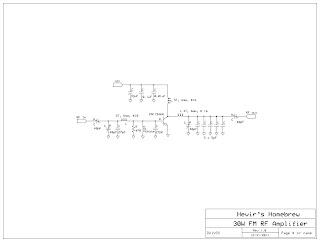The 100 ohm resistor in the splitter section is rated 10W same also to the combiner section. During the test, the 100 ohm resistor at the combiner generates some heat and should have been increased in wattage to 50 or more for safety purposes. It is also necessary to match each amplifier and should have an equal rf output. This can be done by tuning each rf amplifier one at a time while keeping the other unit off. Please be aware that when one amplifier is off, the output power of the combiner is just a quarter of the original power output when all of the rf amplifiers are working together. Once rf output of each rf amplifier are matched then the system is ready for use.
For the input drive of 5 watts I was able to measure 135W output from the combiner network. Please also observe the 100 ohm resistor at the combiner, too much heating means there is an imbalance between the two rf amplifier and should be equalize again. ---73 de du1vss

















